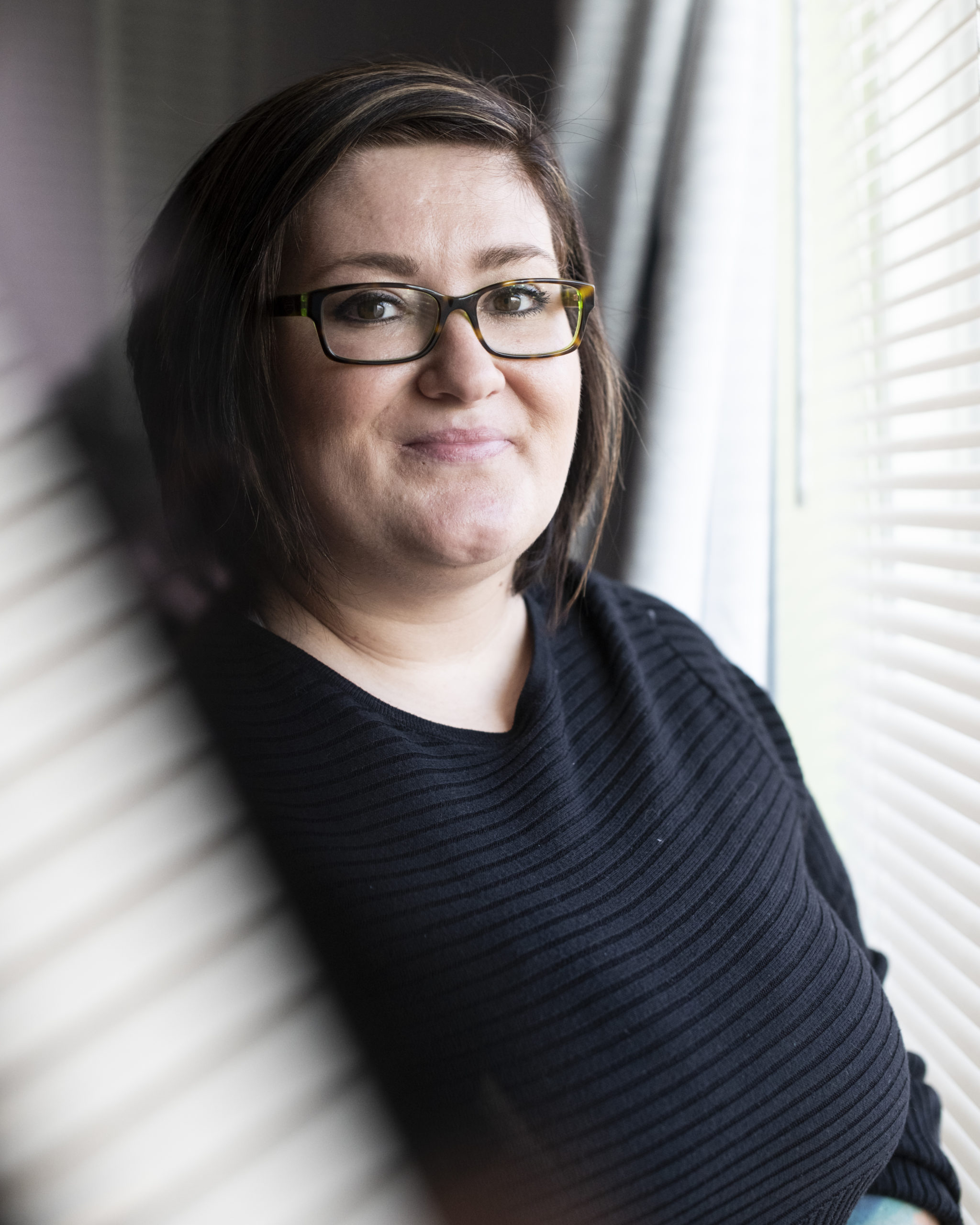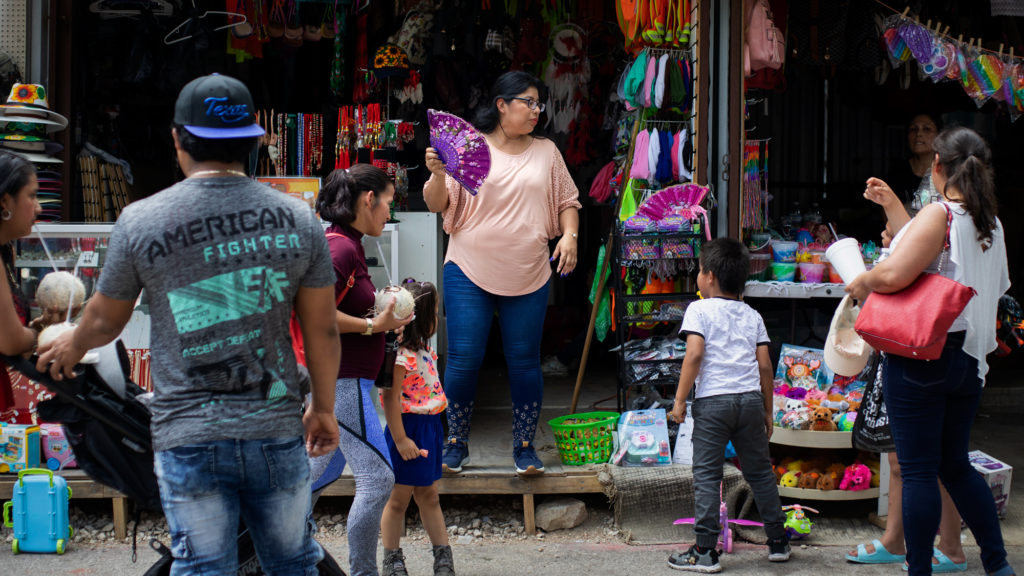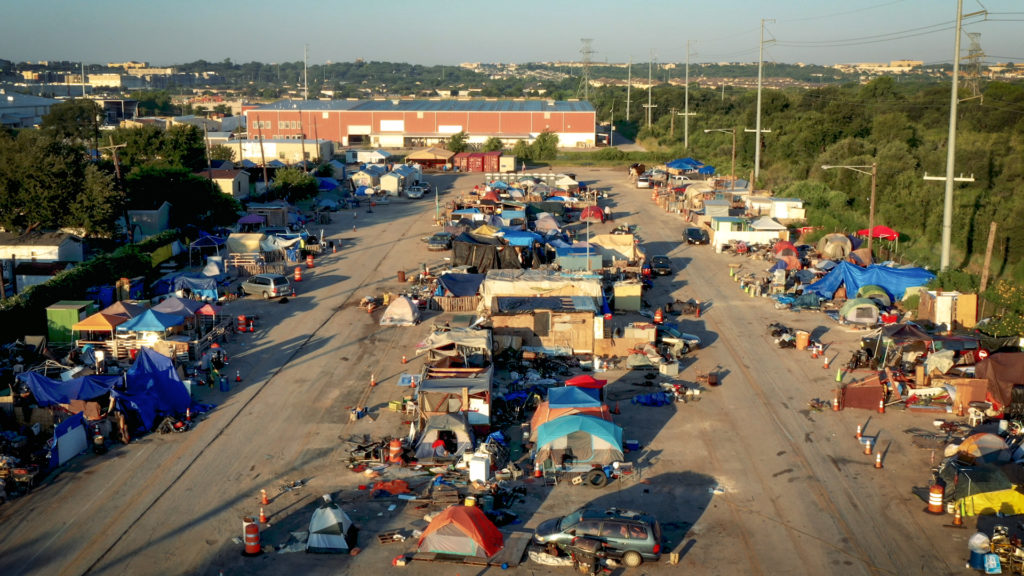This story was produced by 100 Days in Appalachia, an independent, non-profit digital news publication incubated at the Media Innovation Center at the West Virginia University Reed College of Media.
As a teenager in the early 2000s, Carol Lemon was told to take her “crazy pills.”
Lemon, 34, has lived in Parkersburg, West Virginia, for most of her life. The oldest of three girls, she was pressed early into the role of mother figure. “My parents always worked,” she says. “My mom had two jobs; my dad had two jobs. So I was always looking after my little sisters.”
Everything that went wrong in the family, she says, was thrust upon her – somehow, ultimately, her fault.
It was too much. She was depressed; she recognized that. But she didn’t know where to turn for support.
“A lot of times,” Lemon says, “it was, ‘Oh, you just need Jesus. You need to get back into church.’ I’d get scriptures thrown at me.” Or: “‘You know better; your grandpa’s a pastor. You just need God.’”
Lemon was 18 years old when she first attempted suicide after being sexually assaulted. “Nobody believed me. The cop said, ‘Well, you’re 18. He said it was consensual. Goodbye.’”
Lemon became withdrawn; she started cutting herself. Her family would admonish her to “Get over it; stop acting like this. Take your crazy pills.”
She acknowledged, at last, that she needed someone to talk with. She sought help. “I wanted to live. Something in me wanted to.” Lemon was fortunate that behavioral-health services were available in her community; she found help at Westbrook Health Services in Parkersburg.

Carol Lemon struggles with Major Depressive Disorder and social anxiety, and has been going to Westbrook Health Services in Parkersburg, West Virginia, for mental health services for the last decade. [Photo by Lexi Browning]
Barriers to seeking behavioral-health care in largely rural regions can be formidable. Foremost is the availability and accessibility of services. More limited access to education about mental illness is a factor. The “tough-it-out” mentality endemic to rural communities is another barrier.
There’s also a long tradition in Appalachian communities of toughing it out and keeping personal troubles to oneself, particularly for women, whose struggles with mental health have for many decades been lumped into a diagnosis of “nerves,” says Lisa Curtin, director of the clinical psychologist program in Appalachian State University’s Department of Psychology.
The term is used to describe a generalized affliction that could mean anything from anxiety to disorientation to loss of energy or chronic discouragement. Such diagnoses were often treated with “nerve pills” – which would today refer to medications like Valium or Xanax – commonly prescribed by a family physician. The nomenclature has evolved over time, but dismissiveness of depression lingers.
Scrutiny also plays a role. The close watch of neighbors, Curtin suggests, can lead to “at least a perceived stigma.”
“There’s an adage in rural communities,” she says, “that if you don’t remember what you had for breakfast, ask somebody else – somebody knows what you’re doing.” Fearing the judgement of others in the community, many women decline to seek care and continue to suffer.
The onset of COVID-19 presents its own set of challenges: anxieties around health, finances, sheltering and uncertainty – anxieties that, Curtin says, manifest much like depression.
But recent research has led her and her colleagues to believe that women living in rural areas are probably more open to treatment than previously believed. She stresses, however, that providers must acknowledge the barriers women have historically faced when it comes to seeking and benefitting from care.
‘I’m Not Allowed to Be Depressed’
The reactions Lemon encountered from her family members, according to research from Curtin and medical anthropologist Susan Keefe, are rooted in how depression has been historically perceived in central Appalachian communities.
Not uncommonly, women experiencing depression believed, or had someone in their life who believed, “that somehow they weren’t right with God, or that this was a sign that they needed to work through something; that prayer would ease their soul,” Curtin says.
Then there’s the stigma. The fear, for example, of your car being spotted outside a mental-health facility and being perceived as damaged or weak, a burden on your family.
Curtin says self-stigma, the instinct to blame oneself when in distress, tends to be more difficult to overcome than external stigma. A woman might ask herself, Curtin says, “Why am I not strong enough to get past this?”
Thirty-year-old Michaela Johnson, who lives in Parkersburg, carried just such a burden.
Johnson began experiencing depression after the birth of her third child, Jameson. It was a difficult pregnancy and a particularly challenging delivery. Just before Jameson was born, she experienced her first panic attack.
“I kept thinking,” Johnson says, “‘If you can’t stop yourself, they’re gonna put you to sleep. They’re not gonna let you be on this table acting crazy. … They’re not gonna let you be a nut job. You need to calm yourself down.’”
In the midst of this panic, Johnson couldn’t catch her breath; she was certain she was going to die. “That went through my head: ‘I’m gonna die and my husband’s gonna be a single dad and my kids aren’t going to have a mom.’”
Jameson spent a month in the neonatal ICU, two hours away in Morgantown, West Virginia. Johnson felt guilty about being away from her other children and leaving her husband to shoulder all of the responsibilities back home.
“My husband has depression and anxiety,” Johnson says, “so I worried about him.” She would tell her mom, “‘He won’t be able to do this; someone needs to keep him calm.’ I had to worry about him because he doesn’t worry about himself.”
Johnson was also overwhelmed with the sense that her “body didn’t do what it was supposed to do.”
“I cried every day,” she says. “Every day.”
Claire Snell-Rood, a medical anthropologist now on faculty at the University of California, Berkeley, began studying the context of Appalachian women experiencing depression in 2013 as a postdoctoral fellow in the University of Kentucky College of Medicine’s Department of Behavioral Science.
She says many Appalachian women she’s interviewed have told her, “I’m not allowed to be depressed. No one wants to hear about it.” Her goal was to change that.
Research shows that residents of largely rural central Appalachia are 25 percent more likely to experience mentally unhealthy days than the average American. Snell-Rood was interested in what that meant for everyday life in Appalachia and how it was addressed in a region with relatively few health-care resources.
With her colleagues, she conducted research on the prevalence of depression specifically among Appalachian women.
Women are almost twice as likely as men to be diagnosed with depression. Studies have associated the higher risk with biological differences and, Snell-Rood says, with “gender divisions of labor and the fact that women bear a lot of social burdens that are very stressful, especially in terms of caregiving.”
Some researchers suggest that the rates are not so different between genders, but that men tend to present depression differently, through aggressive behavior, for example, while women are more likely to internalize and ruminate on their feelings, exhibiting symptoms more commonly associated with depression.
Today, there are effective treatments available for women in rural communities who struggle with depression. Johnson grew weary of berating herself; she realized she needed to talk with someone. She was diagnosed with depression and PTSD, and now sees a therapist weekly.
“At first, it was dealing with everything,” she says, “and now it’s more just like friendly banter.”
Meeting Women Where They Are
Properly treating depression in a rural community, Curtin says, requires not only services that are accessible, but services that are culturally acceptable, which often involves incorporating someone’s religious beliefs.
Curtin has seen clients who’ve told her upfront: “I don’t care what religion you are; I just need to know that you’re accepting of me being Christian, and that it’s not going to be an issue for you.”
Some of the larger churches in her western North Carolina community offer therapy sessions with professionally trained counselors who identify as Christian. In interviews with these counselors, Curtin learned “they weren’t necessarily counseling people on their faith, but they could use tools that the client was already using, such as prayer.” Or the counselor might cite a Bible verse to reinforce that what they’re experiencing isn’t a failing and that they’re not spiritually remiss.
This is a cognitive intervention, Curtin says, “but you’re using the client’s language and what they’re familiar with, what’s meaningful to them.”
Another treatment option that can be particularly effective in rural communities is an integrated approach to care: offering behavioral-health services within primary-care or other medical practices. Curtin used to run her private practice within an OB-GYN office.
She says this integrated approach is becoming more prevalent, particularly in federally qualified health centers.
Much like practitioners of treatment that respects and observes clients’ religious beliefs, Claire Snell-Rood set out to identify culturally appropriate avenues of expression and recovery in the region.
She chose to study a program called Wellness Recovery Action Planning, or WRAP, in which women from eastern Kentucky communities met in group sessions overseen by community health workers from the University of Kentucky’s Center of Excellence in Rural Health in Hazard. The stipulation was that participants were already engaged in some manner of treatment, whether medication, counseling, or both.
The evidence-based WRAP model is designed to encourage overall wellness and self-management – to help participants develop simple, everyday coping strategies; identify early-warning signs of a mood change; and create crisis and post-crisis plans.
This overall-wellness approach was well received. The women individualized their care plans, defining which resources worked best for them.
Snell-Rood says that comfort with the word “depression” varied among participants, as did skepticism with “what it meant to accept a mental-health diagnosis or label.”
In acknowledgment of this resistance, WRAP makes an effort to minimize clinical terminology. The women in WRAP groups could admit they experience distress without “hooking themselves on to this wagon of clinical baggage, which in some ways can be really helpful,” Snell-Rood says. But this can also generate unwelcome perceptions.
“I think it’s a pride thing,” says Keisha Hudson, a community health worker and one of the facilitators of the WRAP sessions, of the reluctance of women in her community to accept a diagnosis of depression. “You’re supposed to be a pillar, the glue that holds the family together. You’re not supposed to be weak.”
“We women take it all on – the children, the home,” says Carole Frazier, also a community health worker and session facilitator.
A core message of the WRAP program, Frazier stresses, is “that you shouldn’t be ashamed.”
‘Greater Clarity’
Snell-Rood says that in the initial days of her study, it was difficult to get women to show up for interviews. “But once people sat down, I was amazed at how much they shared, and how many people were glad to have a space to talk about depression.”
When Lemon first began seeing her therapist, she felt some trepidation about being seen entering a behavioral-health facility. But now she shares her experiences on social media. “I wouldn’t be alive without this place,” she says of Westbrook Health Services. “I know I wouldn’t.”
“I’m a hairdresser,” Michaela Johnson says. “So I talk. I talk openly with people about it. I’m definitely not ashamed.”
The pressures and isolation of the coronavirus pandemic present new challenges for anyone confronting behavioral-health issues.
“The uncertainty and lack of control associated with COVID predictably relates to depressive and anxiety-related symptoms,” Curtin says. “Isolation, loneliness and limited access to social support” can also heighten the risk of depression.
Curtin says that since the outbreak, former clients are reaching out to therapists they haven’t seen for a while, “which is good, but certainly suggests people are struggling.”
“On the positive side,” she says, “some people report greater clarity of their values.” Rural communities generally offer easier access to uncrowded outdoor spaces, and Curtin is seeing people taking advantage, getting more exercise than before.
She also notes the critical role that telehealth has played in filling the face-to-face void. Therapists and clients have had to quickly adapt to services being provided via a computer or smartphone, and, Curtin says, have done so successfully.
Many throughout Appalachia have no access to the internet and no phone, a reality underscored by the pandemic. Health-care professionals are advocating for a commitment to the expansion of broadband to the remotest regions as another integral tool in resolving the persistent disparities in physical and behavioral health.
Addressing the technology side of the equation can’t fully solve the cultural barriers within the region, which still create pressures on women seeking treatment.
Although Lemon says today she has more good days than bad, her decision to pursue treatment has impacted some of her relationships. “I’ve had to cut a few people out of my life for my mental health. That would be family. It’s still a work in progress.”
But each day, she reminds herself that she doesn’t want to go back to being made to feel that everything is her responsibility, her fault. “I do not want to live my life like that. I have to remind myself of that every day.”



